DS1302
Trickle-Charge Timekeeping Chip
www.maxim-ic.com
FEATURES
§ Real-Time Clock Counts Seconds, Minutes,
Hours, Date of the Month, Month, Day of the
Week, and Year with Leap-Year Compensation
Valid Up to 2100
§ 31 x 8 RAM for Scratchpad Data Storage
§ Serial I/O for Minimum Pin Count
§ 2.0V to 5.5V Full Operation
§ Uses Less than 300nA at 2.0V
§ Single-Byte or Multiple-Byte (Burst Mode) Data
Transfer for Read or Write of Clock or RAM
Data
§ 8-Pin DIP or Optional 8-Pin SO for Surface
Mount
§ Simple 3-Wire Interface
§ TTL-Compatible (VCC = 5V)
§ Optional Industrial Temperature Range:
-40°C to +85°C
§ DS1202 Compatible
§ Underwriters Laboratory (UL) Recognized
ORDERING INFORMATION
PART
DS1302
DS1302N
DS1302S
DS1302SN
DS1302Z
DS1302Z+
DS1302ZN
DS1302ZN+
DS1302S-16
DS1302SN-16
TEMP RANGE
0°C to +70°C
-40°C to +85°C
0°C to +70°C
-40°C to +85°C
0°C to +70°C
0°C to +70°C
-40°C to +85°C
-40°C to +85°C
0°C to +70°C
-40°C to +85°C
TOP MARK
PIN-PACKAGE
DS1302
8 PDIP
DS1302*
8 PDIP
DS1302S
8 SO (200 mils)
DS1302S*
8 SO
DS1302Z
8 SO (150 mils)
+ DS1302Z
8 SO (150 mils)
DS1302ZN
8 SO
8 SO
+ DS1302ZN
16 SO (300 mils) DS1302S16
16 SO (300 mils) DS1302SN16
PIN CONFIGURATIONS
TOP VIEW
VCC2
X1
X2
GND
1
2
3
4
2
0
3
1
S
D
8
7
6
5
VCC1
SCLK
I/O
CE
DIP (300 mils)
VCC2
X1
X2
GND
1
2
3
4
/
Z
S
2
0
3
1
S
D
8
7
6
5
VCC1
SCLK
I/O
CE
SO (200 mils/150 mils)
VCC2
N.C
X1
N.C.
X2
N.C.
N.C.
GND
S
2
0
3
1
S
D
1
2
3
4
1
2
3
4
8
7
6
5
8
7
6
5
VCC1
N.C.
SCLK
N.C.
I/O
N.C.
N.C.
CE
SO (300 mils)
*An N in the lower right-hand corner of the top mark denotes an industrial
part.
+ = lead-free device.
DETAILED DESCRIPTION
The DS1302 trickle-charge timekeeping chip contains a real-time clock/calendar and 31 bytes of static RAM. It
communicates with a microprocessor via a simple serial interface. The real-time clock/calendar provides seconds,
minutes, hours, day, date, month, and year information. The end of the month date is automatically adjusted for
months with fewer than 31 days, including corrections for leap year. The clock operates in either the 24-hour or
12-hour format with an AM/PM indicator.
Note: Some revisions of this device may incorporate deviations from published specifications known as errata. Multiple revisions of any device
may be simultaneously available through various sales channels. For information about device errata, click here: www.maxim-ic.com/errata.
1 of 13
REV: 072204
�
DS1302 Trickle-Charge Timekeeping Chip
Interfacing the DS1302 with a microprocessor is simplified by using synchronous serial communication. Only three
wires are required to communicate with the clock/RAM: CE, I/O (data line), and SCLK (serial clock). Data can be
transferred to and from the clock/RAM 1 byte at a time or in a burst of up to 31 bytes. The DS1302 is designed to
operate on very low power and retain data and clock information on less than 1mW.
The DS1302 is the successor to the DS1202. In addition to the basic timekeeping functions of the DS1202, the
DS1302 has the additional features of dual power pins for primary and backup power supplies, programmable
trickle charger for VCC1, and seven additional bytes of scratchpad memory.
OPERATION
Figure 1 shows the main elements of the serial timekeeper: shift register, control logic, oscillator, real-time clock,
and RAM.
TYPICAL OPERATING CIRCUIT
Figure 1. Block Diagram
CE
I/O
SCLK
DS1302
V CC2
X1
X2
V CC1
GND
VCC
CPU
VCC
X1
X2
OSCILLATOR
COUNTDOWN
AND
CHAIN
1Hz
REAL-TIME
CLOCK
31 x 8 RAM
POWER
CONTROL
DS1302
INPUT
SHIFT
REGISTERS
COMMAND AND
CONTROL LOGIC
v CC1
v CC 2
GND
I/O
SCLK
CE
2 of 13
�
400
350
)
300
ICC1T vs. VCC1T
TYPICAL OPERATING CHARACTERISTICS
(VCC = 3.3V, TA = +25°C, unless otherwise noted.)
PIN DESCRIPTION
A
n
(
T
N
E
R
R
U
C
Y
L
P
P
U
S
VCC1 (V)
150
100
250
200
5.0
2.0
3.0
4.0
DS1302 Trickle-Charge Timekeeping Chip
30
25
20
15
10
5
2.0
ICC2T vs. VCC2T
3.0
VCC2 (V)
4.0
5.0
)
A
u
(
T
N
E
R
R
U
C
Y
L
P
P
U
S
8
1
2
3
4
5
6
7
8
PIN
16
NAME
FUNCTION
1
3
5
8
9
12
14
16
VCC2
X1
X2
GND
CE
I/O
SCLK
VCC1
Primary Power-Supply Pin in Dual Supply Configuration. VCC1 is connected to a
backup source to maintain the time and date in the absence of primary power. The
DS1302 operates from the larger of VCC1 or VCC2. When VCC2 is greater than VCC1 +
0.2V, VCC2 powers the DS1302. When VCC2 is less than VCC1, VCC1 powers the
DS1302.
Connections for Standard 32.768kHz Quartz Crystal. The internal oscillator is
designed for operation with a crystal having a specified load capacitance of 6pF.
For more information on crystal selection and crystal layout considerations, refer to
Application Note 58: Crystal Considerations for Dallas Real-Time Clocks. The
DS1302 can also be driven by an external 32.768kHz oscillator. In this
configuration, the X1 pin is connected to the external oscillator signal and the X2 pin
is floated.
Ground
Input. CE signal must be asserted high during a read or a write. This pin has an
internal 40kW (typ) pulldown resistor to ground. Note: Previous data sheet revisions
referred to CE as RST. The functionality of the pin has not changed.
Input/Push-Pull Output. The I/O pin is the bidirectional data pin for the 3-wire
interface. This pin has an internal 40kW (typ) pulldown resistor to ground.
Input. SCLK is used to synchronize data movement on the serial interface. This pin
has an internal 40kW (typ) pulldown resistor to ground.
Low-Power Operation in Single Supply and Battery-Operated Systems and Low-
Power Battery Backup. In systems using the trickle charger, the rechargeable
energy source is connected to this pin. UL recognized to ensure against reverse
charging current when used with a lithium battery.
2, 4, 6,
7, 10,
11, 13,
15
—
N.C.
No Connection
3 of 13
�
DS1302 Trickle-Charge Timekeeping Chip
OSCILLATOR CIRCUIT
The DS1302 uses an external 32.768kHz crystal. The oscillator circuit does not require any external resistors or
capacitors to operate. Table 1 specifies several crystal parameters for the external crystal. Figure 2 shows a
functional schematic of the oscillator circuit. If using a crystal with the specified characteristics, the startup time is
usually less than one second.
CLOCK ACCURACY
The accuracy of the clock is dependent upon the accuracy of the crystal and the accuracy of the match between
the capacitive load of the oscillator circuit and the capacitive load for which the crystal was trimmed. Additional
error will be added by crystal frequency drift caused by temperature shifts. External circuit noise coupled into the
oscillator circuit may result in the clock running fast. Figure 3 shows a typical PC board layout for isolating the
crystal and oscillator from noise. Refer to Application Note 58: Crystal Considerations for Dallas Real-Time Clocks
for detailed information.
Table 1. Crystal Specifications*
PARAMETER
SYMBOL
MIN
Nominal Frequency
Series Resistance
Load Capacitance
fO
ESR
CL
TYP
32.768
6
MAX
45
UNITS
kHz
kW
pF
*The crystal, traces, and crystal input pins should be isolated from RF generating signals. Refer to
Application Note 58: Crystal Considerations for Dallas Real-Time Clocks for additional specifications.
CRYSTAL
RTC
CHAIN
C L 1
C L 2
X1
X2
RTC
REGISTERS
COUNTDOWN
Figure 2. Oscillator Circuit Showing Internal Bias Network
Figure 3. Typical PC Board Layout for Crystal
LOCAL GROUND PLANE (LAYER 2)
CRYSTAL
X1
X2
NOTE: AVOID ROUTING SIGNALS IN THE
CROSSHATCHED AREA (UPPER LEFT-
HAND QUADRANT) OF THE PACKAGE
UNLESS THERE IS A GROUND PLANE
BETWEEN THE SIGNAL LINE AND THE
PACKAGE.
GND
4 of 13
�
DS1302 Trickle-Charge Timekeeping Chip
COMMAND BYTE
Figure 4 shows the command byte. A command byte initiates each data transfer. The MSB (bit 7) must be a logic
1. If it is 0, writes to the DS1302 will be disabled. Bit 6 specifies clock/calendar data if logic 0 or RAM data if logic 1.
Bits 1 to 5 specify the designated registers to be input or output, and the LSB (bit 0) specifies a write operation
(input) if logic 0 or read operation (output) if logic 1. The command byte is always input starting with the LSB (bit 0).
Figure 4. Address/Command Byte
7
1
6
RAM
C K
5
A4
4
A3
3
A2
2
A1
1
A0
0
RD
W R
CE AND CLOCK CONTROL
Driving the CE input high initiates all data transfers. The CE input serves two functions. First, CE turns on the
control logic that allows access to the shift register for the address/command sequence. Second, the CE signal
provides a method of terminating either single-byte or multiple-byte CE data transfer.
A clock cycle is a sequence of a rising edge followed by a falling edge. For data inputs, data must be valid during
the rising edge of the clock and data bits are output on the falling edge of clock. If the CE input is low, all data
transfer terminates and the I/O pin goes to a high-impedance state. Figure 5 shows data transfer. At power-up, CE
must be a logic 0 until VCC > 2.0V. Also, SCLK must be at a logic 0 when CE is driven to a logic 1 state.
DATA INPUT
Following the eight SCLK cycles that input a write command byte, a data byte is input on the rising edge of the next
eight SCLK cycles. Additional SCLK cycles are ignored should they inadvertently occur. Data is input starting with
bit 0.
DATA OUTPUT
Following the eight SCLK cycles that input a read command byte, a data byte is output on the falling edge of the
next eight SCLK cycles. Note that the first data bit to be transmitted occurs on the first falling edge after the last bit
of the command byte is written. Additional SCLK cycles retransmit the data bytes should they inadvertently occur
so long as CE remains high. This operation permits continuous burst mode read capability. Also, the I/O pin is tri-
stated upon each rising edge of SCLK. Data is output starting with bit 0.
BURST MODE
Burst mode can be specified for either the clock/calendar or the RAM registers by addressing location 31 decimal
(address/command bits 1 through 5 = logic 1). As before, bit 6 specifies clock or RAM and bit 0 specifies read or
write. There is no data storage capacity at locations 9 through 31 in the Clock/Calendar Registers or location 31 in
the RAM registers. Reads or writes in burst mode start with bit 0 of address 0.
When writing to the clock registers in the burst mode, the first eight registers must be written in order for the data to
be transferred. However, when writing to RAM in burst mode it is not necessary to write all 31 bytes for the data to
transfer. Each byte that is written to will be transferred to RAM regardless of whether all 31 bytes are written or not.
CLOCK/CALENDAR
The time and calendar information is obtained by reading the appropriate register bytes. Table 2 illustrates the RTC
registers. The time and calendar are set or initialized by writing the appropriate register bytes. The contents of the
time and calendar registers are in the binary-coded decimal (BCD) format.
5 of 13
�
DS1302 Trickle-Charge Timekeeping Chip
The day-of-week register increments at midnight. Values that correspond to the day of week are user-defined but
must be sequential (i.e., if 1 equals Sunday, then 2 equals Monday, and so on.). Illogical time and date entries
result in undefined operation.
When reading or writing the time and date registers, secondary (user) buffers are used to prevent errors when the
internal registers update. When reading the time and date registers, the user buffers are synchronized to the
internal registers the rising edge of CE.
The countdown chain is reset whenever the seconds register is written. Write transfers occur on the falling edge of
CE. To avoid rollover issues, once the countdown chain is reset, the remaining time and date registers must be
written within 1 second.
The DS1302 can be run in either 12-hour or 24-hour mode. Bit 7 of the hours register is defined as the 12- or 24-
hour mode-select bit. When high, the 12-hour mode is selected. In the 12-hour mode, bit 5 is the AM/PM bit with
logic high being PM. In the 24-hour mode, bit 5 is the second 10-hour bit (20–23 hours). The hours data must be
re-initialized whenever the 12/24 bit is changed.
CLOCK HALT FLAG
Bit 7 of the seconds register is defined as the clock halt (CH) flag. When this bit is set to logic 1, the clock oscillator
is stopped and the DS1302 is placed into a low-power standby mode with a current drain of less than 100nA. When
this bit is written to logic 0, the clock will start. The initial power-on state is not defined.
WRITE-PROTECT BIT
Bit 7 of the control register is the write-protect bit. The first seven bits (bits 0 to 6) are forced to 0 and always read 0
when read. Before any write operation to the clock or RAM, bit 7 must be 0. When high, the write-protect bit
prevents a write operation to any other register. The initial power-on state is not defined. Therefore, the WP bit
should be cleared before attempting to write to the device.
TRICKLE-CHARGE REGISTER
This register controls the trickle-charge characteristics of the DS1302. The simplified schematic of Figure 6 shows
the basic components of the trickle charger. The trickle-charge select (TCS) bits (bits 4 to 7) control the selection of
the trickle charger. To prevent accidental enabling, only a pattern of 1010 enables the trickle charger. All other
patterns will disable the trickle charger. The DS1302 powers up with the trickle charger disabled. The diode select
(DS) bits (bits 2 and 3) select whether one diode or two diodes are connected between VCC2 and VCC1. If DS is 01,
one diode is selected or if DS is 10, two diodes are selected. If DS is 00 or 11, the trickle charger is disabled
independently of TCS. The RS bits (bits 0 and 1) select the resistor that is connected between VCC2 and VCC1. The
resistor selected by the resistor select (RS) bits is as follows:
RS BITS
RESISTOR
00
01
10
11
None
R1
R2
R3
TYPICAL
VALUE
None
2kW
4kW
8kW
If RS is 00, the trickle charger is disabled independently of TCS.
Diode and resistor selection is determined by the user according to the maximum current desired for battery or
super cap charging. The maximum charging current can be calculated as illustrated in the following example.
Assume that a system power supply of 5V is applied to VCC2 and a super cap is connected to VCC1. Also assume
that the trickle charger has been enabled with one diode and resistor R1 between VCC2 and VCC1. The maximum
current IMAX would therefore be calculated as follows:
IMAX = (5.0V – diode drop) / R1 ≈ (5.0V – 0.7V) / 2kW ≈ 2.2mA
As the super cap charges, the voltage drop between VCC2 and VCC1 decreases and therefore the charge current
decreases.
6 of 13
�
DS1302 Trickle-Charge Timekeeping Chip
CLOCK/CALENDAR BURST MODE
The clock/calendar command byte specifies burst mode operation. In this mode, the first eight clock/calendar
registers can be consecutively read or written (see Table 2) starting with bit 0 of address 0.
If the write-protect bit is set high when a write clock/calendar burst mode is specified, no data transfer will occur to
any of the eight clock/calendar registers (this includes the control register). The trickle charger is not accessible in
burst mode.
At the beginning of a clock burst read, the current time is transferred to a second set of registers. The time
information is read from these secondary registers, while the clock may continue to run. This eliminates the need to
re-read the registers in case of an update of the main registers during a read.
RAM
The static RAM is 31 x 8 bytes addressed consecutively in the RAM address space.
RAM BURST MODE
The RAM command byte specifies burst mode operation. In this mode, the 31 RAM registers can be consecutively
read or written (see Table 2) starting with bit 0 of address 0.
REGISTER SUMMARY
A register data format summary is shown in Table 2.
CRYSTAL SELECTION
A 32.768kHz crystal can be directly connected to the DS1302 via pins 2 and 3 (X1, X2). The crystal selected for
use should have a specified load capacitance (CL) of 6pF. For more information on crystal selection and crystal
layout consideration, refer to Application Note 58: Crystal Considerations for Dallas Real-Time Clocks.
Figure 5. Data Transfer Summary
NOTE: IN BURST MODE, CE IS KEPT HIGH AND ADDITIONAL SCLK CYCLES ARE SENT UNTIL THE END OF THE BURST.
D1 D2 D3 D4 D5 D6 D7
D0
D1 D2 D3 D4 D5 D6 D7
SINGLE-BYTE WRITE
SINGLE-BYTE READ
A1
A2
A3
A4 R/C
R/W A0
A1
R/W A0
D0
A2
A3
A4 R/C
1
SCLK
CE
1
CE
SCLK
I/O
I/O
7 of 13
�
DS1302 Trickle-Charge Timekeeping Chip
BIT 4 BIT 3 BIT 2 BIT 1 BIT 0
Seconds
Minutes
Hour
Date
Month
Year
Day
0
RS
0
RS
0
0
DS
0
DS
RANGE
00–59
00–59
1–12/0–23
1–31
1–12
1–7
00–99
—
—
00-FFh
00-FFh
00-FFh
.
.
.
00-FFh
CH
Table 2. Register Address/Definition
RTC
READ WRITE BIT 7 BIT 6 BIT 5
81h
83h
85h
87h
89h
8Bh
8Dh
8Fh
91h
10 Date
0
0
10 Year
0
80h
82h
84h
86h
88h
8Ah
8Ch
8Eh
90h
10 Seconds
10 Minutes
AM/PM Hour
10
WP
TCS
0
0
0
0
0
0
0
0
12/24
0
0
10
Month
TCS
TCS
TCS
CLOCK BURST
BEh
BFh
RAM
C1h
C3h
C5h
.
.
.
C0h
C2h
C4h
.
.
.
FCh
FDh
RAM BURST
FEh
FFh
Figure 6. Programmable Trickle Charger
TRICKLE CHARGE REGISTER (90h write, 91h read)
Bit 7
TCS3
Bit 6
TCS2
Bit 5
TCS1
Bit 4
TCS0
Bit 3
DS1
Bit 2
DS0
Bit 1
Bit 0
ROUT1 ROUT0
TCS0-3 = TRICKLE CHARGER SELECT
DS0-1 = DIODE SELECT
ROUT0-1 = RESISTOR SELECT
1 0F 16 SELECT
NOTE: ONLY 1010b ENABLES CHARGER
1 OF 2
SELECT
1 OF 3
SELECT
VCC2
VCC1
R1
2K W
R2
4k W
R3
8k W
8 of 13
�
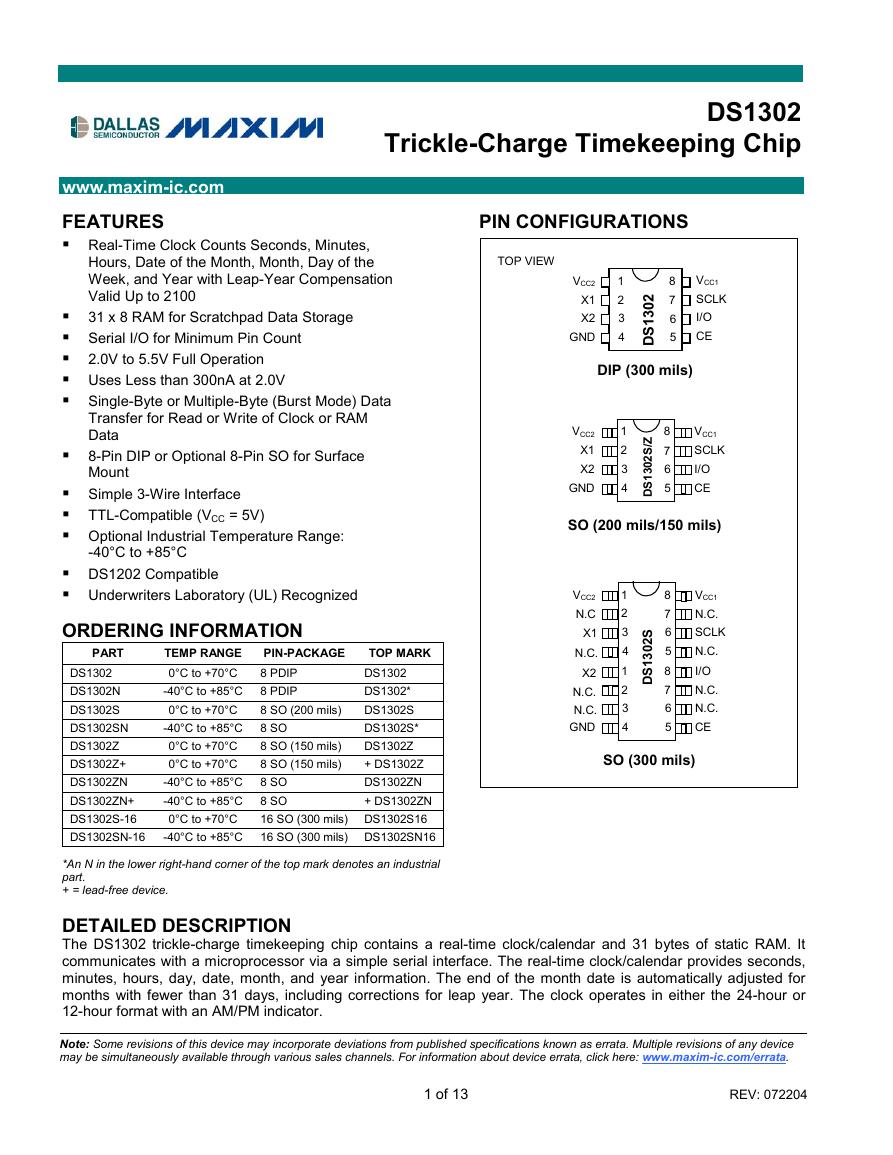
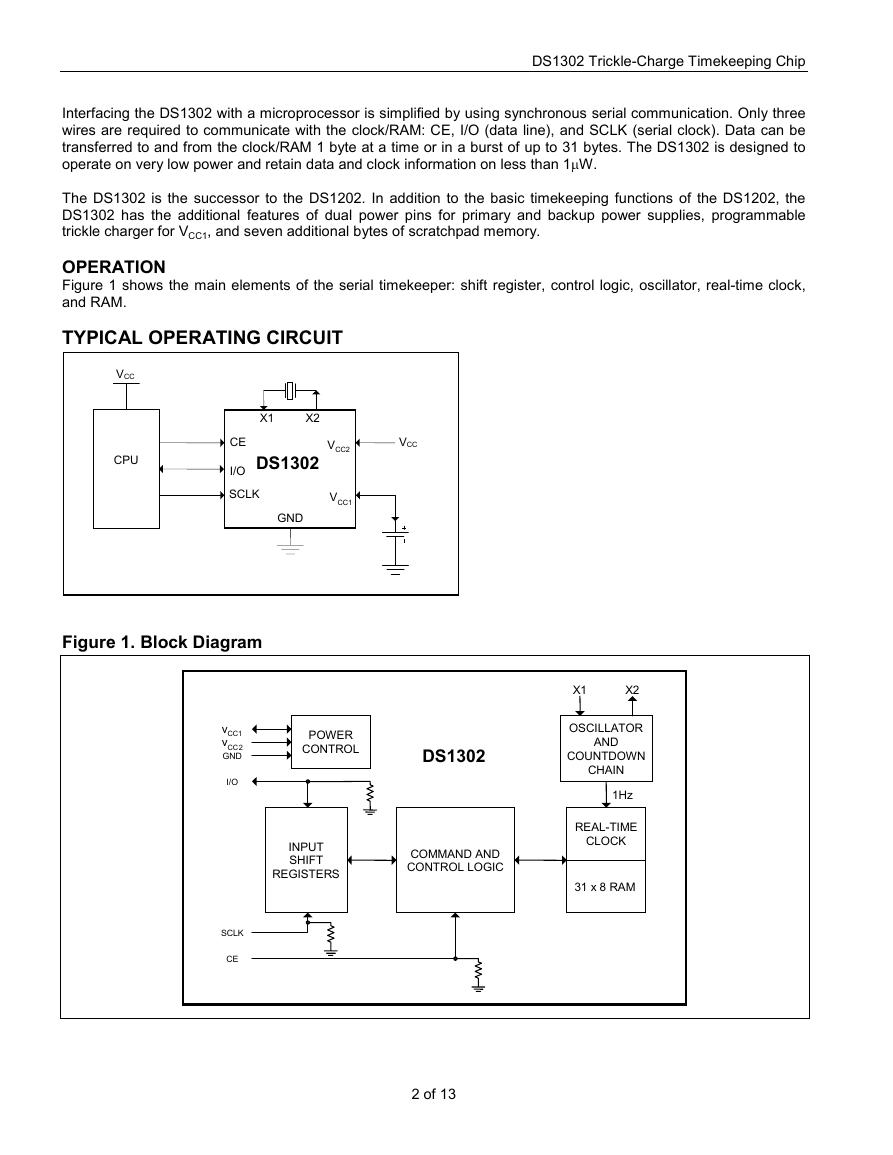
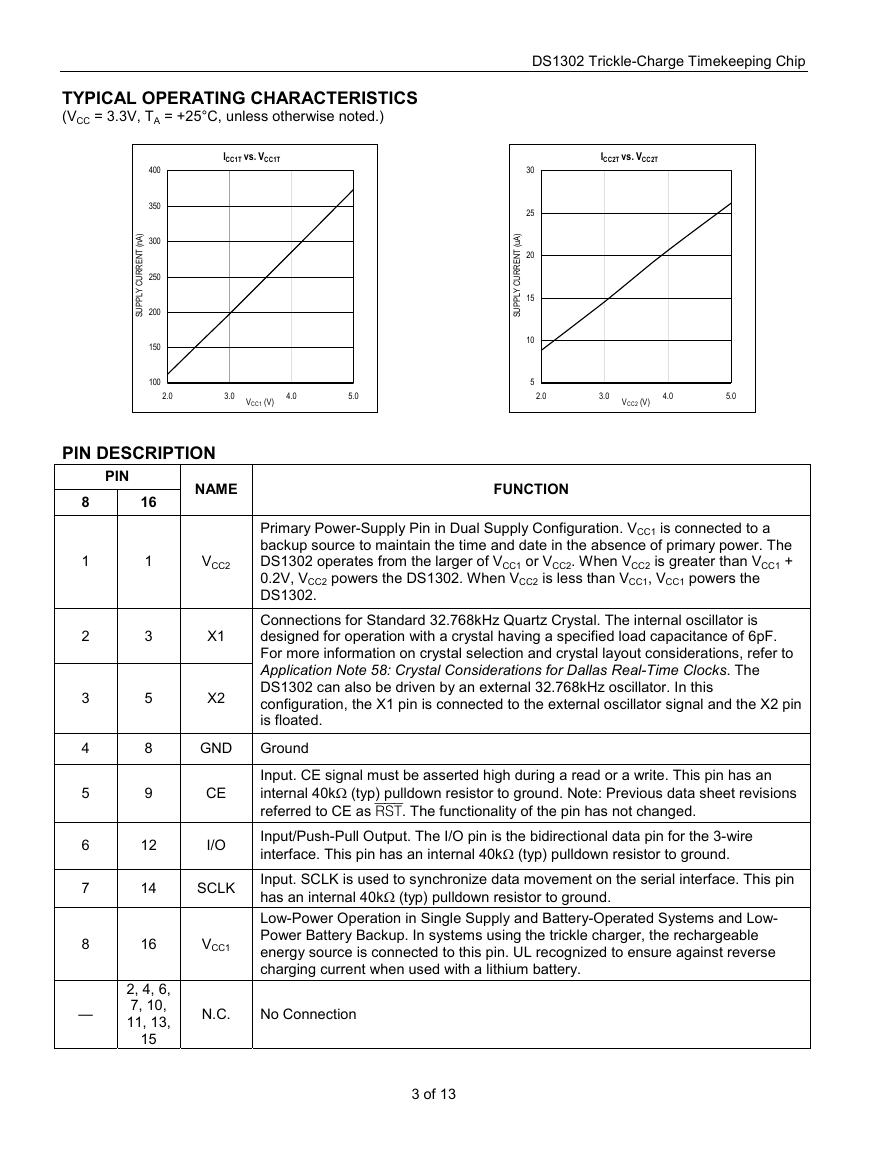
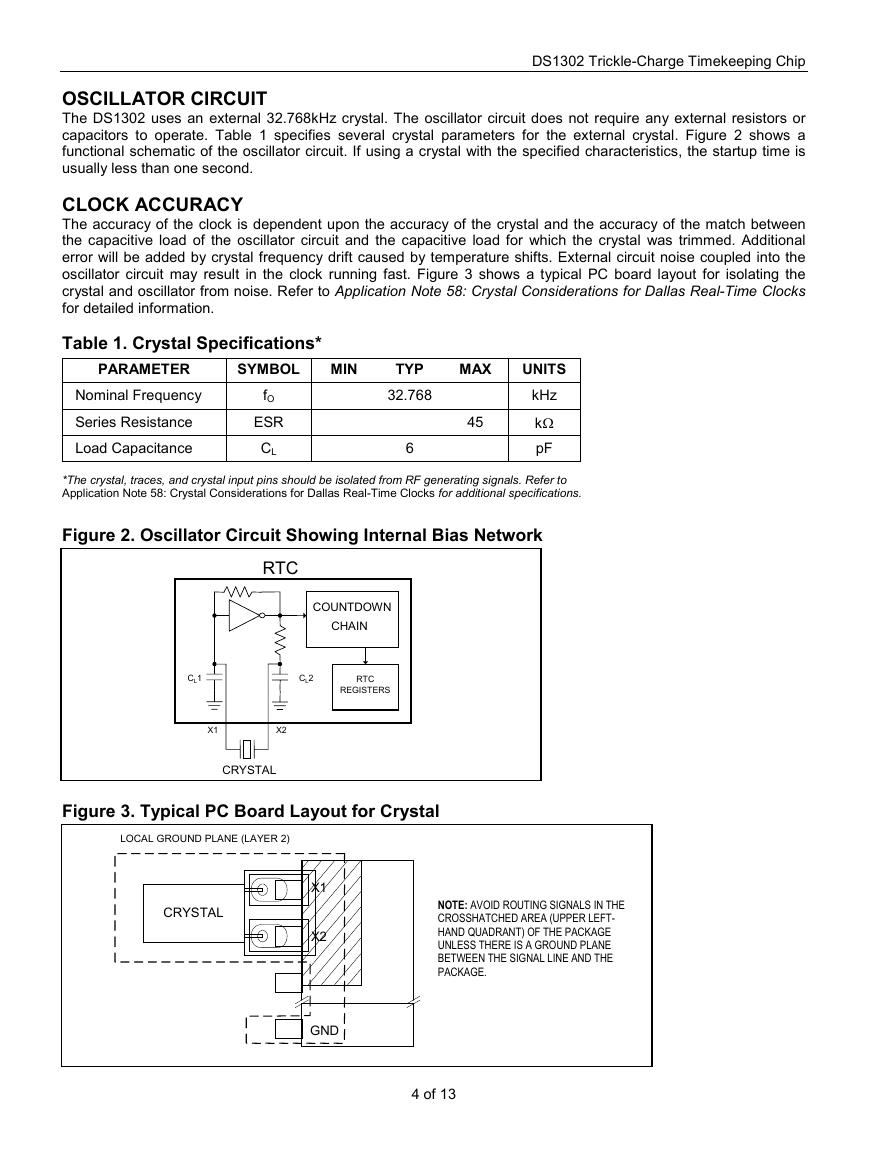
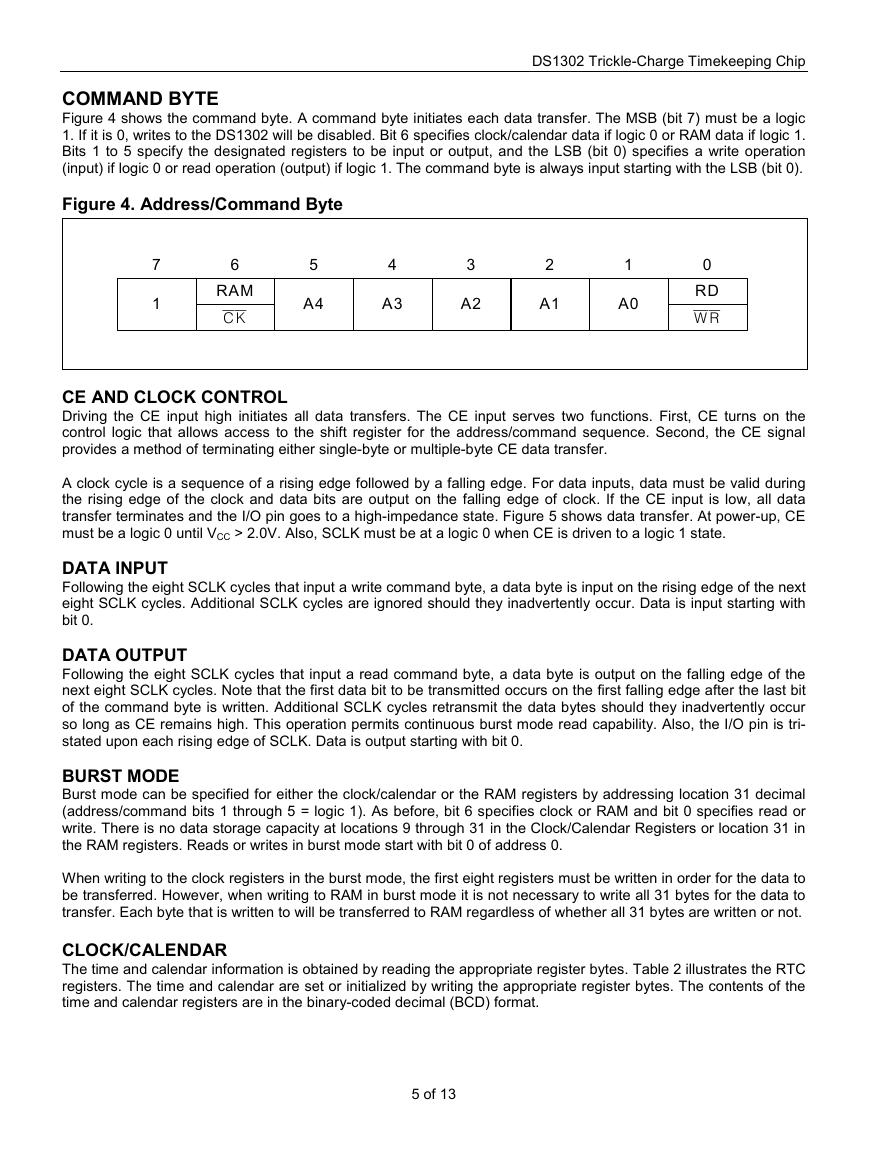
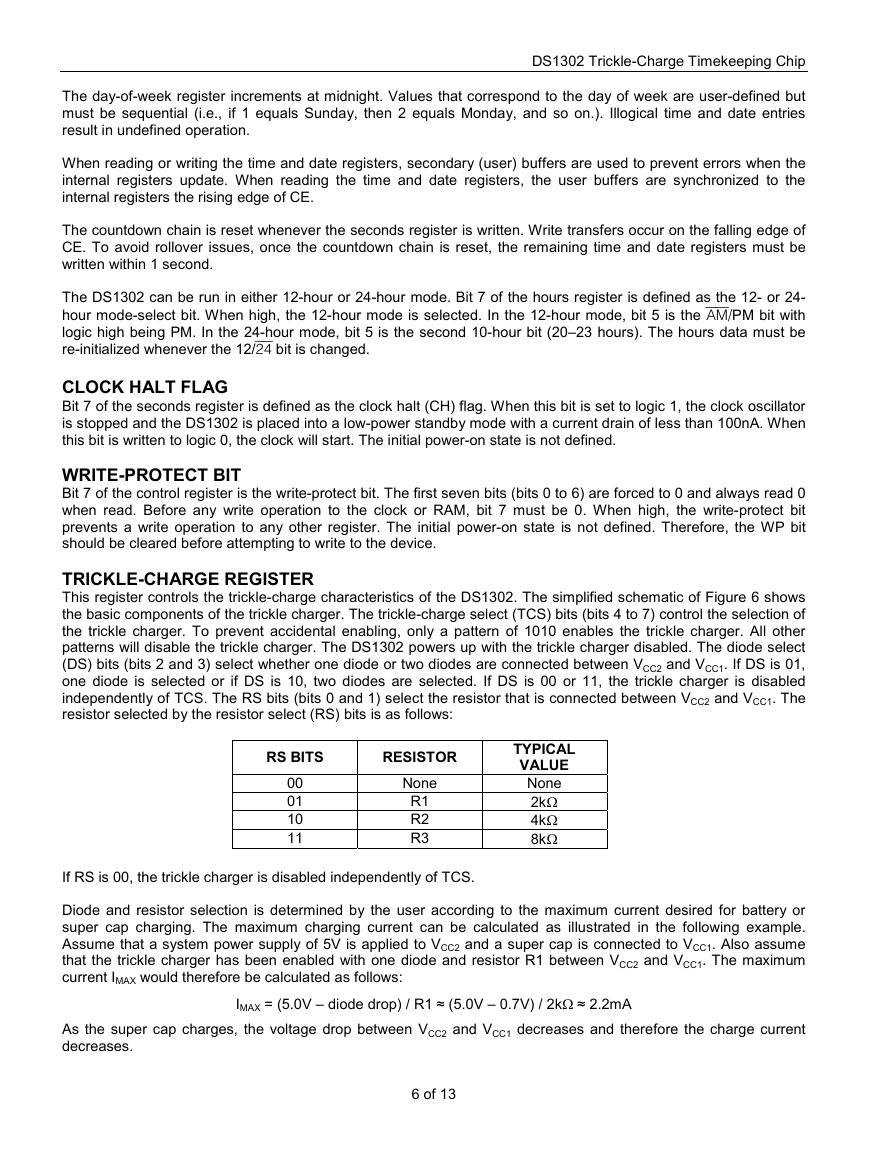
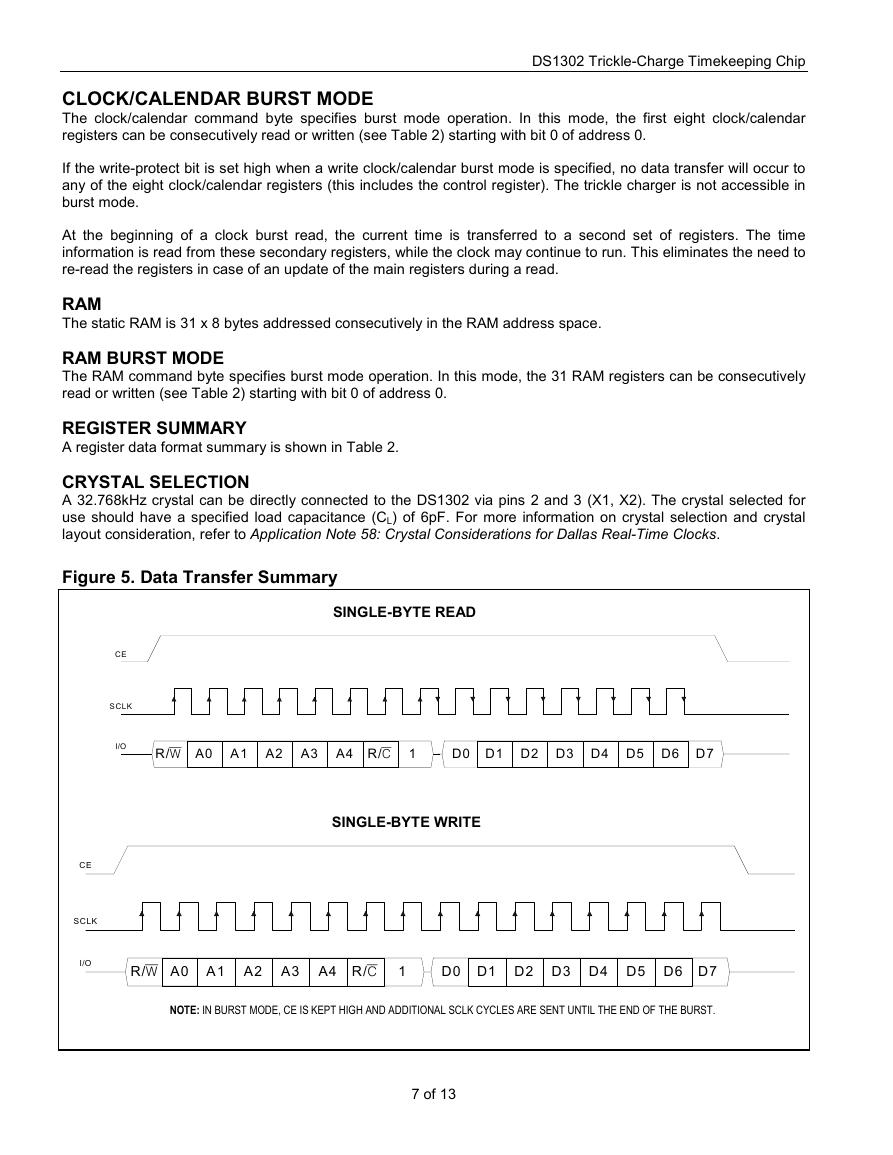
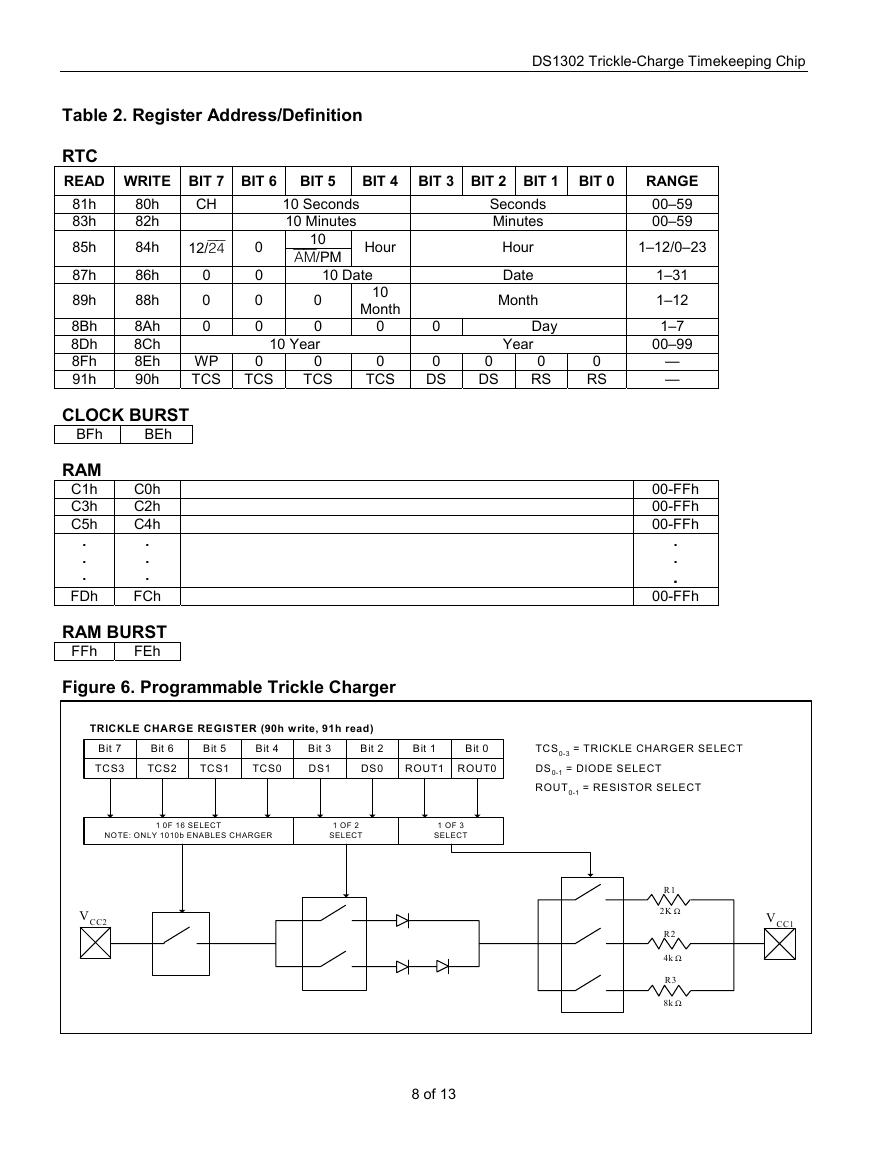








 V2版本原理图(Capacitive-Fingerprint-Reader-Schematic_V2).pdf
V2版本原理图(Capacitive-Fingerprint-Reader-Schematic_V2).pdf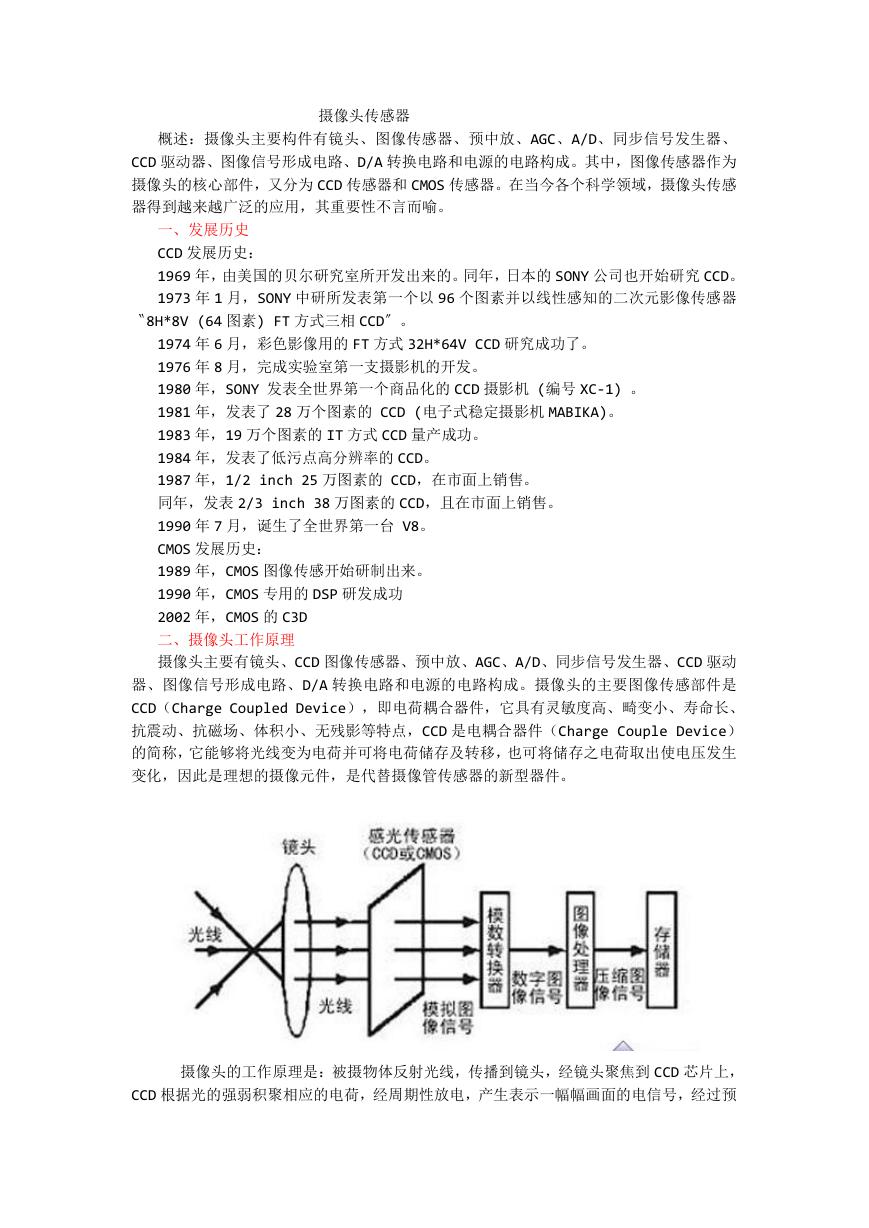 摄像头工作原理.doc
摄像头工作原理.doc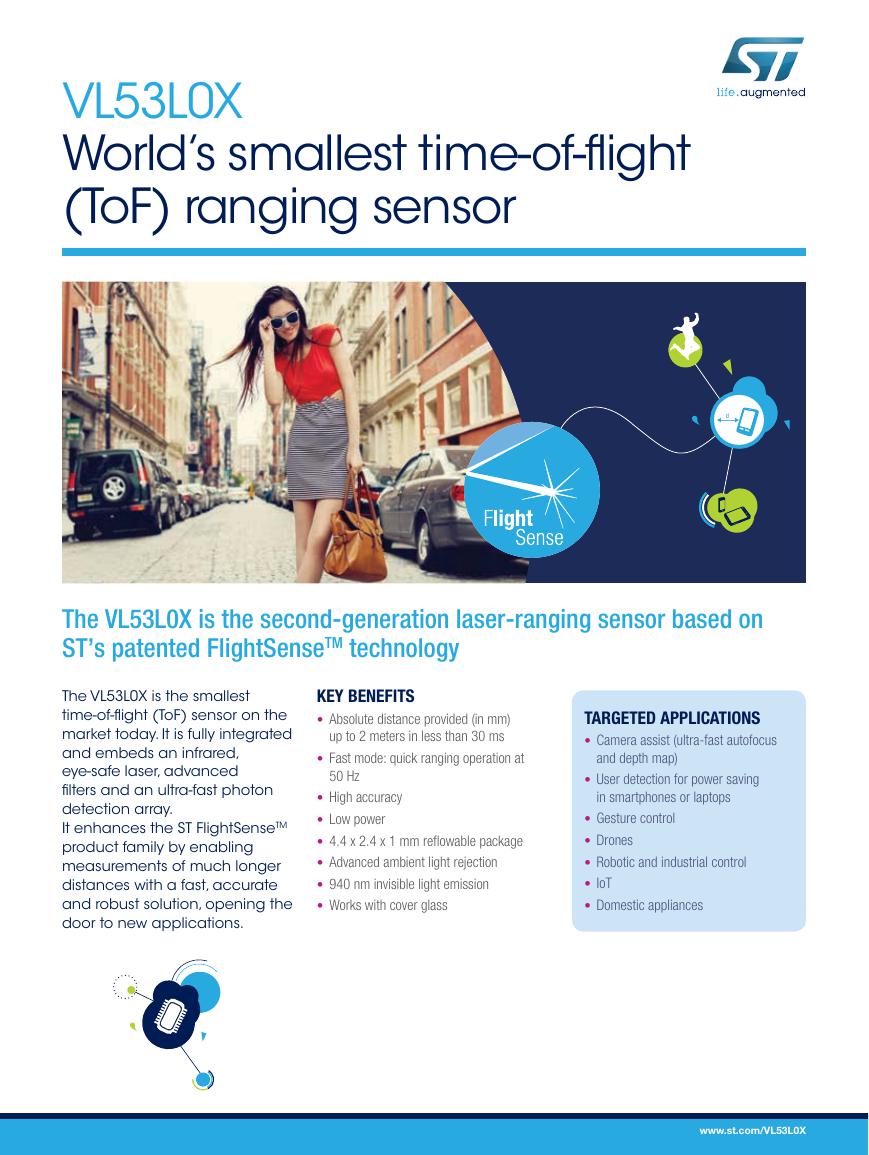 VL53L0X简要说明(En.FLVL53L00216).pdf
VL53L0X简要说明(En.FLVL53L00216).pdf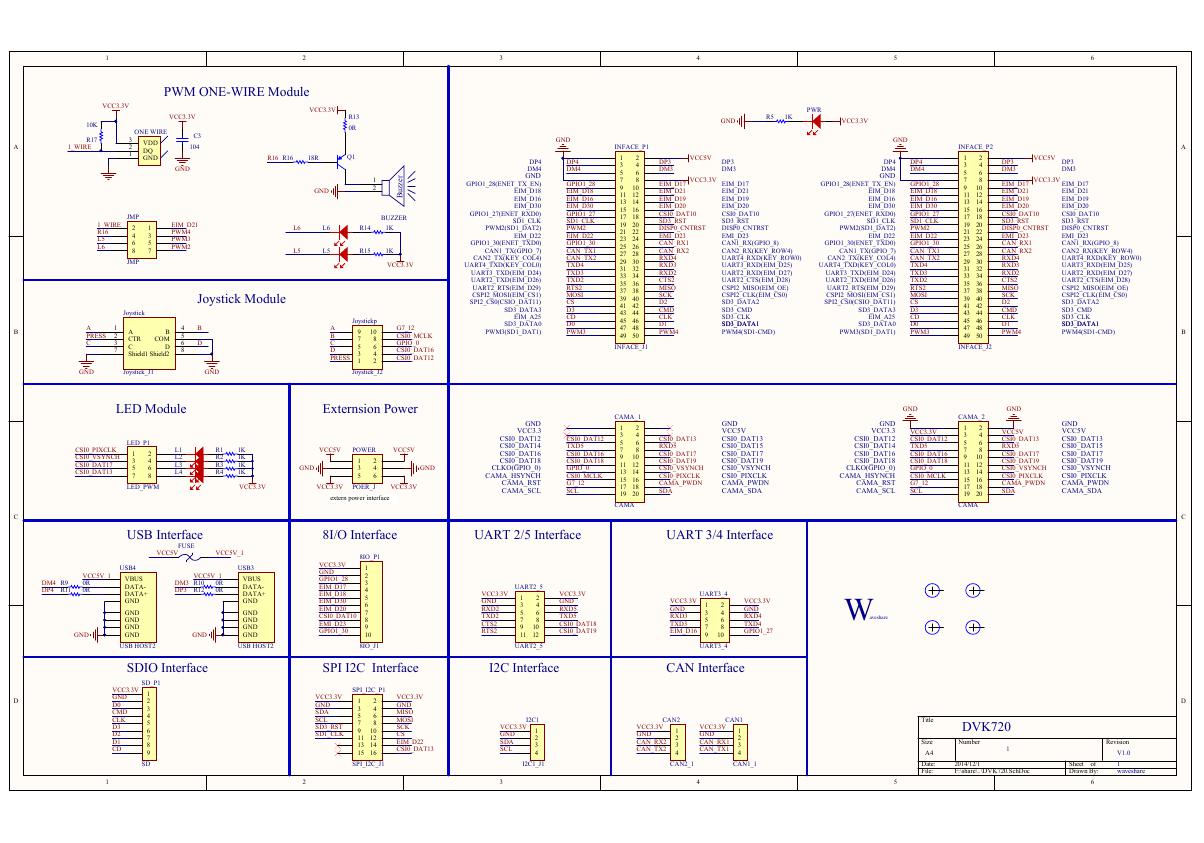 原理图(DVK720-Schematic).pdf
原理图(DVK720-Schematic).pdf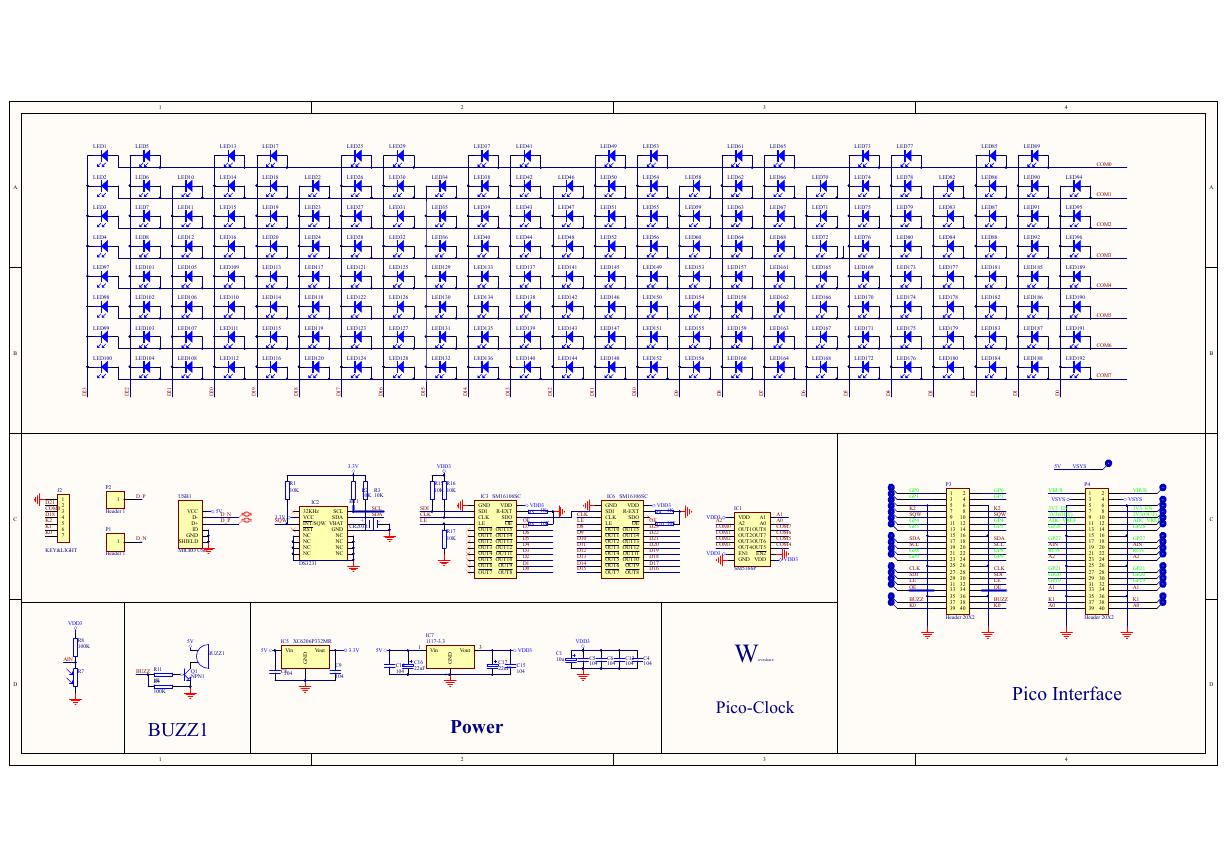 原理图(Pico-Clock-Green-Schdoc).pdf
原理图(Pico-Clock-Green-Schdoc).pdf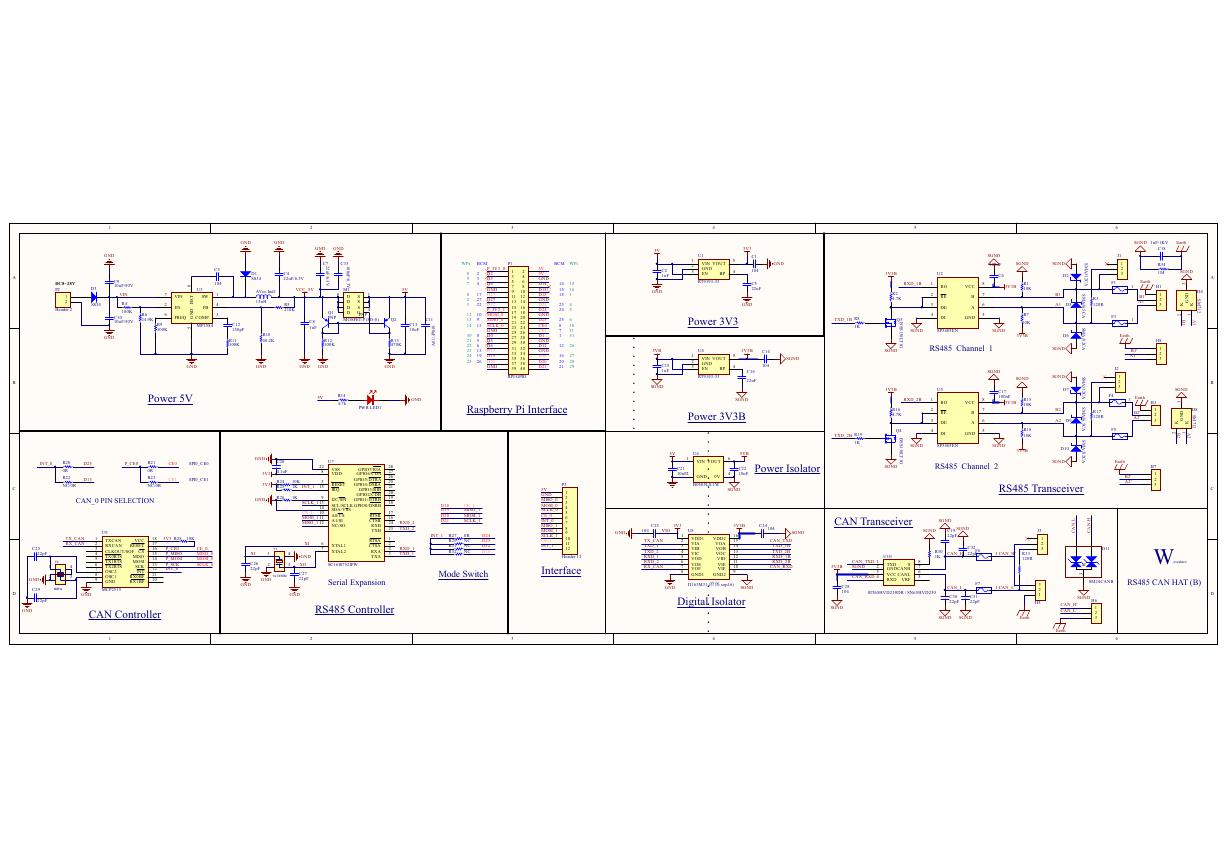 原理图(RS485-CAN-HAT-B-schematic).pdf
原理图(RS485-CAN-HAT-B-schematic).pdf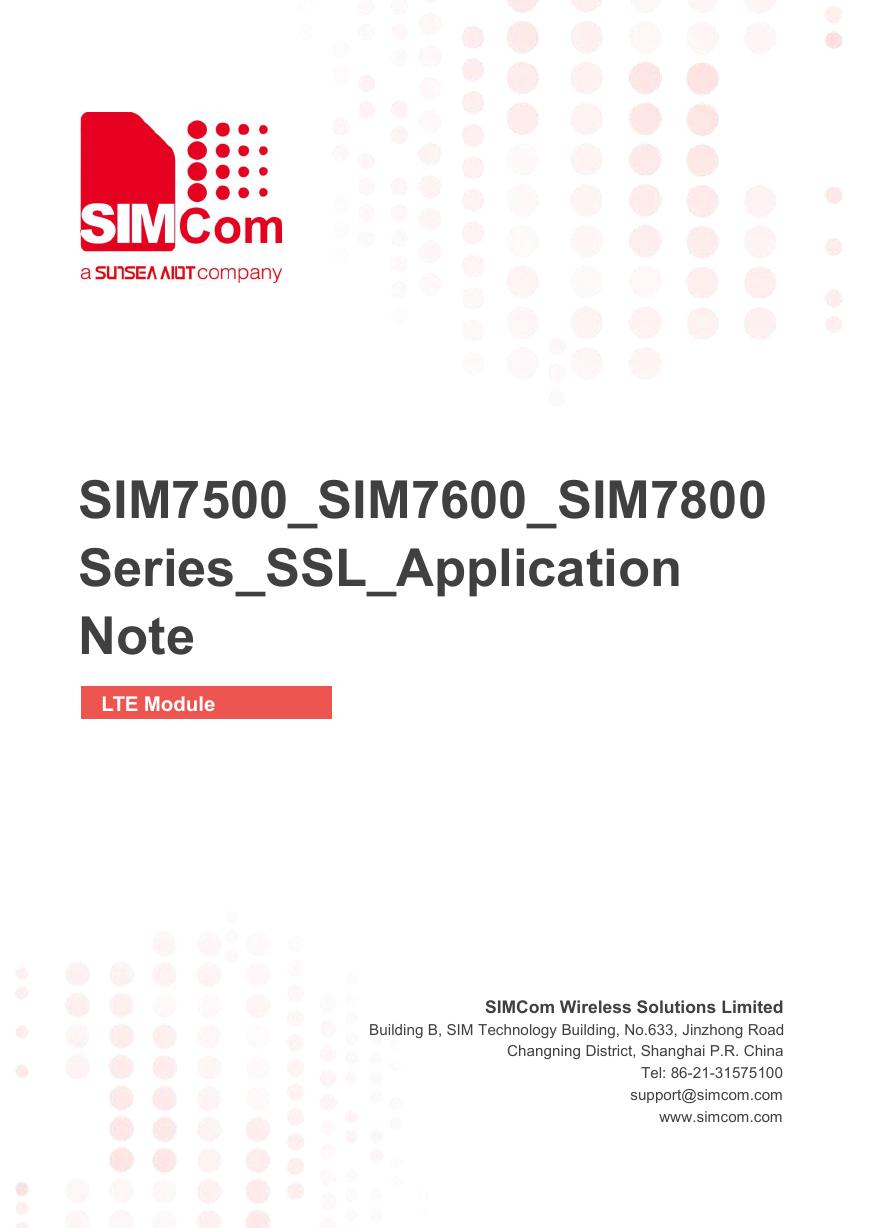 File:SIM7500_SIM7600_SIM7800 Series_SSL_Application Note_V2.00.pdf
File:SIM7500_SIM7600_SIM7800 Series_SSL_Application Note_V2.00.pdf ADS1263(Ads1262).pdf
ADS1263(Ads1262).pdf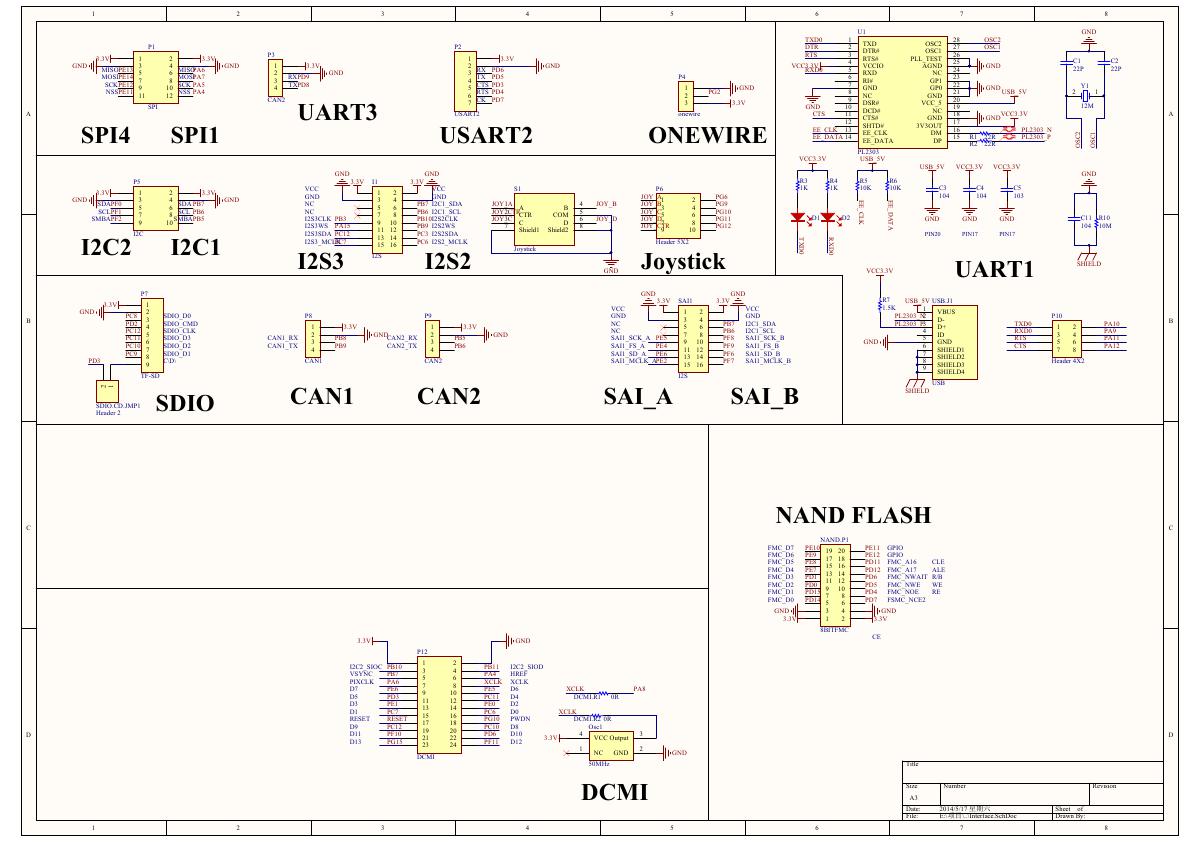 原理图(Open429Z-D-Schematic).pdf
原理图(Open429Z-D-Schematic).pdf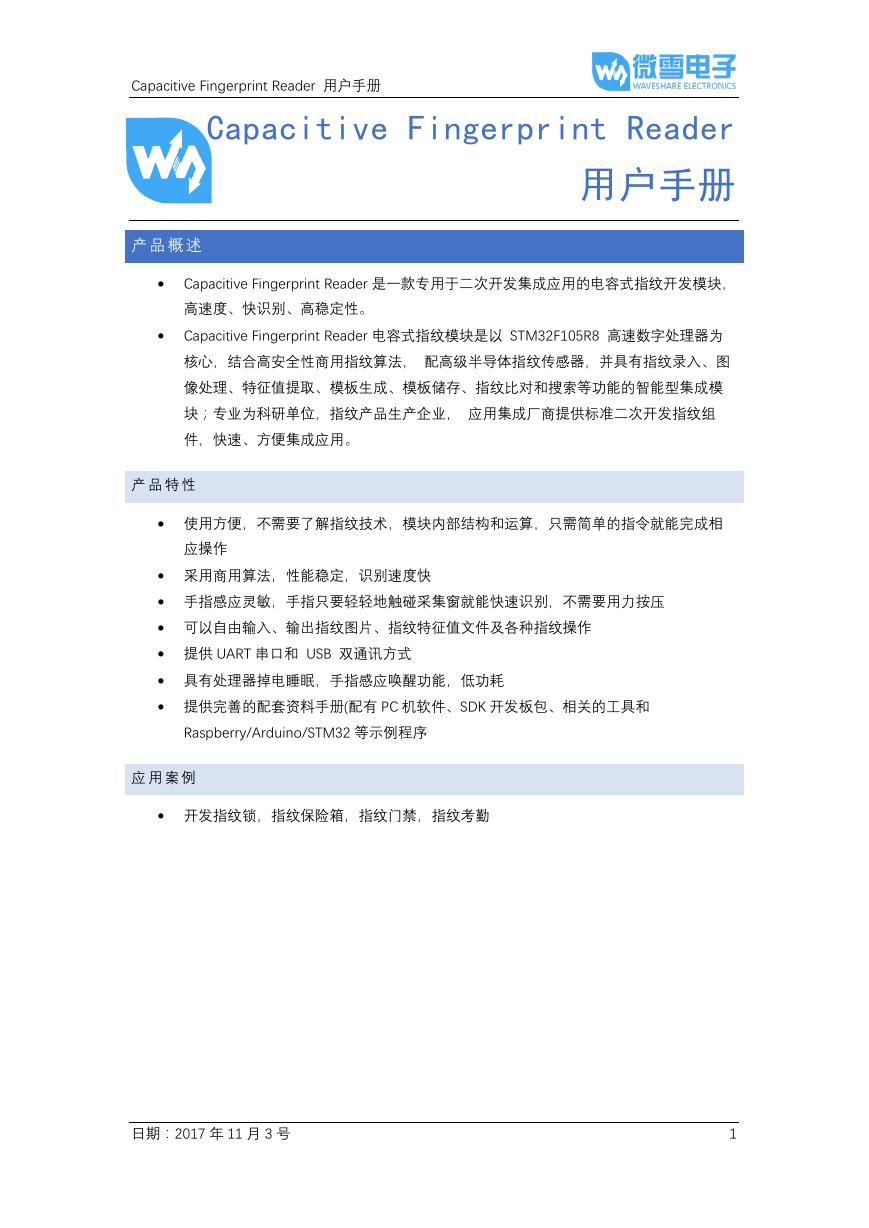 用户手册(Capacitive_Fingerprint_Reader_User_Manual_CN).pdf
用户手册(Capacitive_Fingerprint_Reader_User_Manual_CN).pdf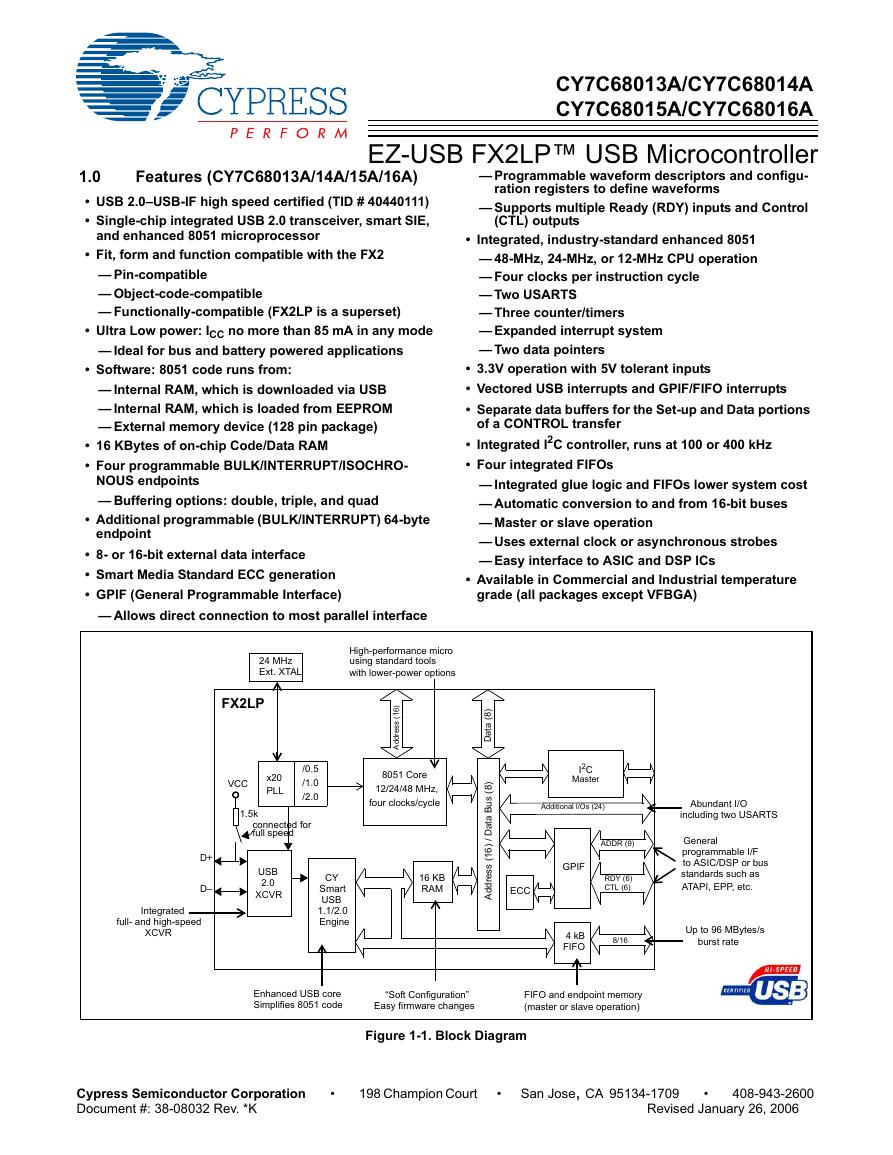 CY7C68013A(英文版)(CY7C68013A).pdf
CY7C68013A(英文版)(CY7C68013A).pdf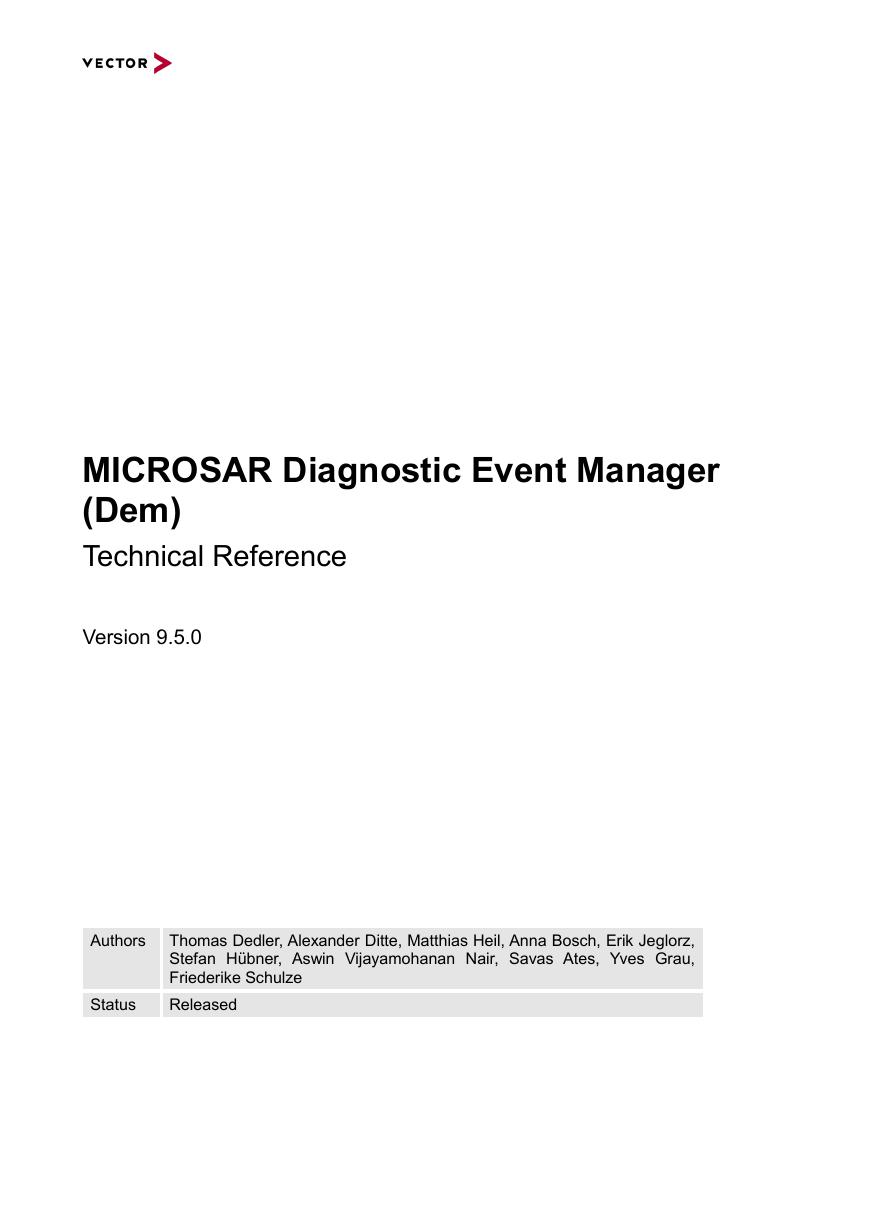 TechnicalReference_Dem.pdf
TechnicalReference_Dem.pdf